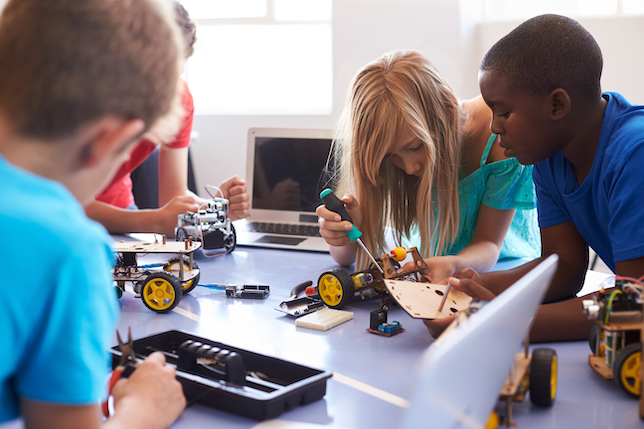Image Source: Google
STEM (Science, Technology, Engineering, and Mathematics) education has become increasingly important in today's world. It provides students with the necessary skills to thrive in a rapidly advancing technological society. One effective way to engage students in STEM subjects is through a hands-on approach to learning. By actively participating in experiments, projects, and challenges, students can develop a deeper understanding of key concepts and improve their problem-solving abilities. In this article, we will explore the wonders of STEM education (also known as "Formazione STEM" in the Italian language) through a hands-on approach and how it can benefit students of all ages.
The Benefits of Hands-On Learning in STEM
Hands-on learning in STEM subjects offers numerous benefits for students. Some of the key advantages include:
1. Enhanced Understanding of Concepts
- Engaging in hands-on activities allows students to experience abstract concepts in a tangible way.
- By seeing and interacting with the principles they are learning about, students can develop a deeper understanding of how things work.
2. Improved Problem-Solving Skills
- Hands-on learning encourages students to think critically and creatively to solve problems.
- By facing challenges in a real-world context, students can develop their problem-solving skills and learn how to overcome obstacles.
3. Increased Engagement and Motivation
- Hands-on activities make learning fun and engaging for students.
- By actively participating in projects and experiments, students are more likely to stay motivated and interested in STEM subjects.
Hands-On Learning Activities in STEM
There are countless hands-on learning activities that can be incorporated into STEM education. Some popular options include:
1. Robotics Workshops
- Robotics workshops allow students to build and program robots to perform specific tasks.
- By working with robotics kits, students can learn about engineering, electronics, and computer programming in a hands-on way.
2. Science Experiments
- Hands-on science experiments help students explore scientific principles and phenomena firsthand.
- By conducting experiments and observing results, students can develop their investigative skills and curiosity about the natural world.
3. Engineering Challenges
- Engineering challenges task students with designing and building structures, vehicles, or machines to meet specific criteria.
- By taking on these challenges, students can learn about the engineering design process and the importance of innovation and creativity in problem-solving.
Implementing Hands-On Learning in the Classroom
Integrating hands-on learning activities into the classroom requires careful planning and resources. Here are some tips for educators looking to incorporate hands-on learning in their STEM curriculum:
1. Provide Access to Materials and Tools
- Ensure that students have access to the necessary materials, tools, and equipment for hands-on activities.
- Having a well-equipped classroom or makerspace can facilitate a smoother implementation of hands-on learning projects.
2. Encourage Collaboration and Teamwork
- Assign group projects and activities to encourage collaboration and teamwork among students.
- Working together on hands-on projects can help students develop communication skills and learn how to work effectively in a team.
3. Emphasize the Process Over the Result
- Focus on the learning process and problem-solving strategies rather than the final outcome of hands-on projects.
- Encourage students to reflect on their experiences, setbacks, and successes to promote a growth mindset and a deeper understanding of the concepts at hand.
Conclusion
Hands-on learning is a powerful tool for engaging students in STEM subjects and fostering a deeper understanding of key concepts. By providing opportunities for hands-on exploration and experimentation, educators can help students develop the skills they need to succeed in a technology-driven world. Whether through robotics workshops, science experiments, or engineering challenges, hands-on learning activities offer countless benefits for students of all ages. By embracing a hands-on approach to STEM education, we can inspire the next generation of innovators and problem-solvers.

